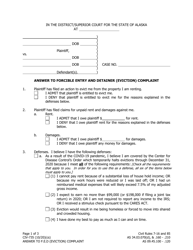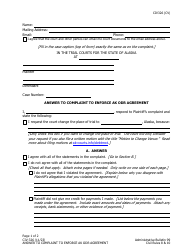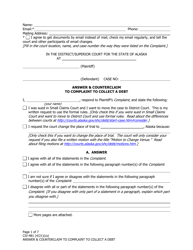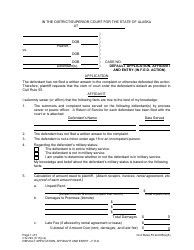This version of the form is not currently in use and is provided for reference only. Download this version of
Form CIV-730
for the current year.
Form CIV-730 Complaint for Forcible Entry and Detainer - Alaska
What Is Form CIV-730?
This is a legal form that was released by the Alaska Court System - a government authority operating within Alaska. As of today, no separate filing guidelines for the form are provided by the issuing department.
FAQ
Q: What is a Complaint for Forcible Entry and Detainer?
A: A Complaint for Forcible Entry and Detainer is a legal document used to initiate a lawsuit in Alaska for eviction.
Q: What is Forcible Entry and Detainer?
A: Forcible Entry and Detainer is a legal term used to describe the wrongful act of entering or remaining in someone else's property without permission.
Q: When can I use a Complaint for Forcible Entry and Detainer?
A: You can use a Complaint for Forcible Entry and Detainer in Alaska when you want to evict someone from your property for non-payment of rent or other lease violations.
Q: What information should be included in the Complaint for Forcible Entry and Detainer?
A: The Complaint should include your name and address, the tenant's name and address, the reason for eviction, the amount of rent owed (if applicable), and any other relevant details.
Q: What is the process after filing a Complaint for Forcible Entry and Detainer?
A: After filing the Complaint, you must serve a copy of the Complaint on the tenant and then attend a court hearing to present your case. If successful, you may obtain an eviction order.
Q: Can I represent myself in a Forcible Entry and Detainer case?
A: Yes, you can represent yourself in a Forcible Entry and Detainer case. However, it is recommended to consult with an attorney for legal advice and guidance.
Q: What are the possible outcomes of a Forcible Entry and Detainer case?
A: The possible outcomes of a Forcible Entry and Detainer case include eviction of the tenant, a judgment for unpaid rent or damages, or a dismissal of the case if the court finds in favor of the tenant.
Q: Can a tenant dispute a Forcible Entry and Detainer case?
A: Yes, a tenant can dispute a Forcible Entry and Detainer case and present their defense at the court hearing.
Q: What is the timeframe for a Forcible Entry and Detainer case?
A: The timeframe for a Forcible Entry and Detainer case can vary, but generally, the process takes several weeks to a few months from filing the Complaint to obtaining an eviction order.
Form Details:
- Released on September 1, 2014;
- The latest edition provided by the Alaska Court System;
- Easy to use and ready to print;
- Quick to customize;
- Compatible with most PDF-viewing applications;
- Fill out the form in our online filing application.
Download a fillable version of Form CIV-730 by clicking the link below or browse more documents and templates provided by the Alaska Court System.














